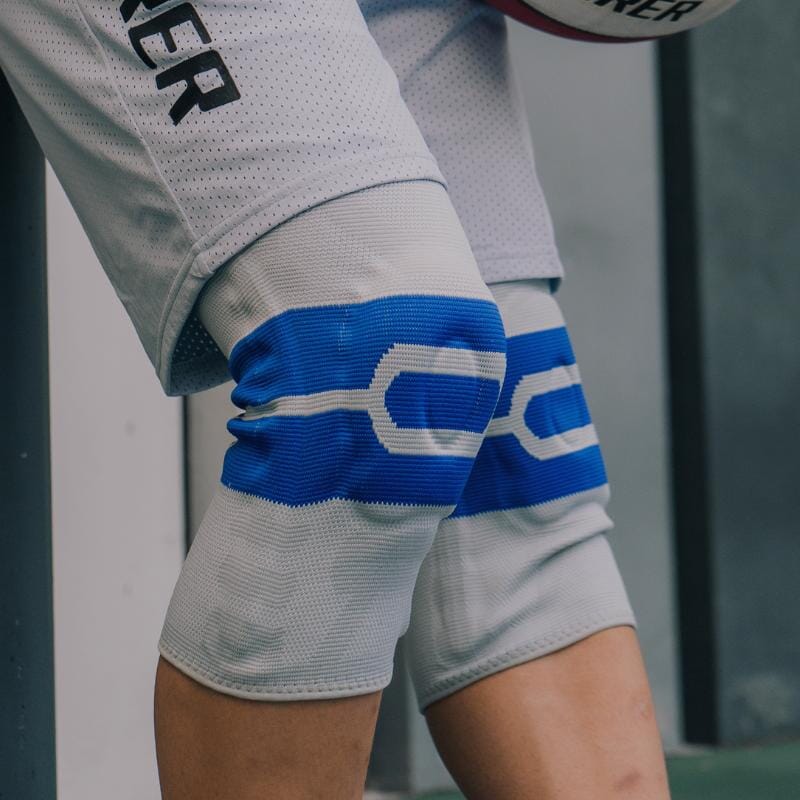How To Train Your Back Muscles
How to train your back muscles

Why are back muscles important?
Having strong back muscles is not just for athletes or bodybuilders, non athletes should also frequently strengthen and do some forms of exercise to maintain and strengthen their back muscles. As a person ages their back and abdominal muscles tend to weaken, this could lead to frequent lower back pains and increased risk of spine injury due to the extra stress it puts on their spine having to contribute more strength to make up for the weak back muscles as they go about their daily activities.
Today we will be discussing the different types of back muscles and their purpose. We will also be sharing a few exercises that can be performed in the gym or at home to help you build a stronger back.
Problems caused by weak back muscles.
While muscles like the glutes and thighs are used whenever we walk or climbs steps, there is very little activation of deep back muscles in our daily lives. Because of this, the back muscles are usually underworked and weaker as compared to your glutes or thighs.

Bad Posture
Having weak back muscles can cause an array of problems. For example, if someone has a weak lower back, the muscles are not strong enough to keep them fully upright leading to improper posture thus putting unnecessary strain on the lower spine which could lead to lower spine injuries in the long run.
Overworking your spine
People with weaker back muscles tend to have spinal problems as they get older. This is due to the everyday stress they put on their spine when they perform everyday task like lifting a load or bending down. Because of this constant overworking of their spine, these same people tend to develop lower spine pain later on in their lives.
The different types of back muscles and how to train them.
Extensor muscles
The extensor muscles or more commonly called the lower back muscles. These muscles are responsible for holding up the spine, supporting the gluteal muscles and lifting objects. It is one of the most important muscles in the body as a strong lower back can help even out the stress placed on the spine when performing everyday tasks.

Exercises to strengthen your Extensor muscles
Gym: Deadlift. Perhaps one the most popular exercises performed in the gym, the deadlift provides massive strength and muscle gains to the lower back and is a preferred lower back exercise by athletes and non athletes all around the world.

How to perform a Deadlift:
- Put a comfortable weight on both sides of a barbell. (Try to avoid weights you cannot handle)
- Stand with feet shoulder-width apart under the barbell.
- Bend over with a shoulder-width grip on the bar.
- Bend your knees until your shins touch the bar.
- Lift chest up and straighten your lower back.
- Take a deep breath and stand up with the weight. (Do try to keep your back straight to prevent injury)
- Hold the weight for a second at the top, keep your hips and knees locked.
- Return the weight to the floor slowly while keeping your back straight.
Recommended intensity:
Non-athletes: 8-10 reps with comfortable weight for 4-5 sets.
Athletes: 5-8 reps with heavy weight for 2-3 sets.
If you require additional lower back support when performing this exercise, we recommend: RIGORER STABILISING BACK SUPPORT [BS006]
Home: Prone back extension. This exercise is excellent for stretching and strengthening your lower back, it is simple to do and can be performed at home without any equipment.
How to perform Prone back extensions:
- Lie flat on the ground with palms facing up and your toes touching the floor.
- Slowly raise yourself of the ground by pulling your shoulders back and lifting your legs up.
- Tighten your core at the top and try to pull your shoulders back as far as they can go.
- Look straight ahead throughout the movement and hold for 1-2 seconds at the top.
- Slowly return to the starting position.
Recommended intensity:
Non-athletes: 10-16 reps for 4-5 sets.
Athletes: 12-20 reps for 4-5 sets.
Flexor muscles
The flexor muscles also known as the upper back muscles, they are responsible for supporting the shoulders and neck. They are also the main muscles activated along with the arms and shoulders when pulling objects. A strong upper back is essential to help take stress off of the neck and shoulders resulting in their long term health.

Exercises to strengthen your Flexor muscles
Gym: Seated cable rows. This exercise is ideal for building a strong upper back and stronger shoulders. It works the upper back with the help of a machine by incorporating a pulling movement constant tension on the upper back, this works the upper back and shoulders and will minimize the risk of injury when performing pulling movements in your daily life.
How to perform Seated cable rows:
- Sit on the machine with your legs in front of you.
- Set the pin to a comfortable weight. (You can go heavier if you are looking to build more strength and size.)
- Grip the handle tightly while keeping your back straight and your chest out.
- Pull towards your body while keeping your shoulders back. (Try to really engage your upper back muscles.)
- The top of the movement should be when your upper back is fully contracted.
- Hold the weight for 1-2 seconds and slowly bring it back to the starting position.
Recommended intensity:
Non-athletes: 12-16 reps with comfortable weight for 4-5 sets.
Athletes: 8-12 reps with heavy weight for 4-5 sets.
Home: Resistance band bent-over rows. This exercise is good for working your upper back and rear deltoids at home, it requires only a resistance band and is very easy to perform.
How to perform Resistance band bent over rows:
- Stand on the resistance band with feet shoulder-width apart.
- Take one side of the band in each hand.
- Bend forward at about a 60-70 degree angle keeping your chest out and back straight.
- Bend your elbows and pull the resistance band to your chest. (Try to keep elbows close to the body.)
- Pause at the top of the movement for 1-2 seconds while contracting your upper back.
- Slowly move your arms back to the starting position.
Recommended intensity:
Non-athletes: 12-16 reps for 4-5 sets.
Athletes: 14-20 reps for 4-5 sets.
If you do not have a resistance band, we recommend: RIGORER CALISTHENICS RESISTANCE BAND
Latissimus Dorsi Muscles
The latissimus dorsi muscles or the lats are the large V-shaped muscles that connect your arms to your vertebral column. They help protect and stabilize your spine while providing support to your upper back and arm movements. While not the largest muscles in the back, the lats are important as they help move your arms and help to increase overall strength in your back.

Exercises to strengthen your lats
Gym: Lat pulldown. This exercise is always included in the workout regime of almost every person who frequents the gym. It is excellent for building the strength of your lats and biceps.

How to perform a lat pulldown:
- Sit on the machine with legs on the ground. (Arc your back slightly and keep your chest out.)
- Set a comfortable weight that you can handle. (Set a weight you are able to perform safely with good form.)
- Hold the bar slightly outside of shoulder-width or a little wider.
- Pull the bar towards your chest until it goes just under your chin. (Try to keep lats contracted and engaged.)
- Hold it for 1-2 seconds at the end of the movement.
- Bring the bar back to the starting position while breathing out slowly. (Aim to keep constant tension on the lats.)
Recommend intensity:
Non-athletes: 10-14 reps with comfortable weight for 4-6 sets.
Athletes: 6-8 reps with heavy weight for 2-4 sets.
Home: Pull-ups. A classic exercise for strengthening your lats with your own body weight. It engages your lats, shoulders and biceps to pull your bodyweight up. It can be done anywhere with a pull-up bar, if you want to perform this exercise at home you can purchase a home pull-up bar which can be installed in any doorway.
How to perform a pull-up:
- Grab the bar about shoulder-width apart and raise your feet off the floor.
- Pull yourself up by trying to pull your elbows to the floor. (Focus on using more of the lats to pull yourself up)
- The top of the movement is when your chin is raised above the bar. (Hold it for 1 second)
- Lower yourself until your arms are straight.
Recommended intensity:
Non-athletes: 6-10 reps for 3-4 sets.
Athletes: 8-12 reps for 3-5 sets.
Strengthening and maintaining strong back muscles are an essential part of a healthy body, it will minimize long-term spine, neck and shoulder injuries. Having a stronger back also improves overall upper body strength giving you a much easier time playing sports or carrying out your daily activities.




It’s a shame you don’t have a donate button! I’d most certainly
donmate to this outstanding blog! I suppose for now i’ll
settle ffor book-marking and adding your RSS feed to mmy Google account.
I look forward to new updates and will talk abouit this site witrh my
Facebook group. Chat soon!
Pump muscle web page biceps muscles
Great blog! Do yoou have any suggestions for aspiring writers?
I’m hoping to start my owwn site soon but I’m a little lost on everything.
Would you propose starting with a free platform like Wordpress or go for a
paid option? There are so many choices out thhere thast I’m totally
ovverwhelmed .. Any ideas? Maany thanks!
Muscle bodybuilder weeb page pump muscle for men
Leave a comment